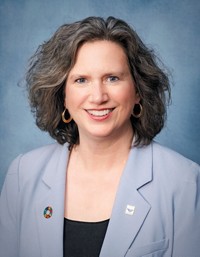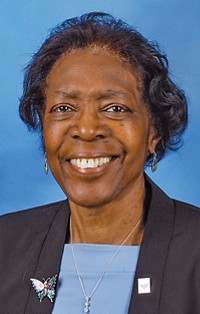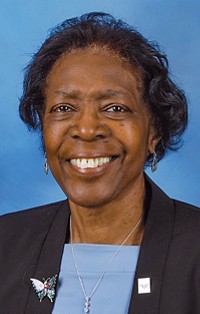Advertisement
Grab your lab coat. Let's get started
Welcome!
Welcome!
Create an account below to get 6 C&EN articles per month, receive newsletters and more - all free.
It seems this is your first time logging in online. Please enter the following information to continue.
As an ACS member you automatically get access to this site. All we need is few more details to create your reading experience.
Not you? Sign in with a different account.
Not you? Sign in with a different account.
ERROR 1
ERROR 1
ERROR 2
ERROR 2
ERROR 2
ERROR 2
ERROR 2
Password and Confirm password must match.
If you have an ACS member number, please enter it here so we can link this account to your membership. (optional)
ERROR 2
ACS values your privacy. By submitting your information, you are gaining access to C&EN and subscribing to our weekly newsletter. We use the information you provide to make your reading experience better, and we will never sell your data to third party members.
Careers
Cultivating A Diverse Leadership At A Member Organization
Efforts to diversify American Chemical Society governance start with the leadership pipeline
by Linda Wang
December 1, 2014
| A version of this story appeared in
Volume 92, Issue 48

It’s easy to point to an organization and say that it lacks diversity at the top. It’s also easy to say that more women and minorities are needed in leadership roles. What’s not so easy is determining how to diversify an organization’s leadership so that it’s not only diverse but truly inclusive and representative of its membership.
The American Chemical Society has been tackling this challenge head-on by using a bottom-up, holistic approach that involves all areas of the organization. By cultivating a more diverse leadership pipeline throughout the society, ACS aims to achieve a more inclusive governance, which comprises the board of directors, councilors, and committee leaders.
“Diversity is something that the society takes very seriously,” says Flint H. Lewis, ACS secretary and general counsel. “It’s a core value in our strategic plan, and it’s something the society continues to work at.”
With more diversity, “you get more opinions, you get more history, and you get different backgrounds,” says D. Richard Cobb, chair of the ACS Committee on Nominations & Elections (N&E). “What you don’t want is a room full of the same people nodding their heads the same way 100% of the time.”
“But diversity is just the first step, it’s not the endgame,” notes Teri Quinn Gray, chair of the Diversity & Inclusion Advisory Board (D&I), which represents ACS’s various diversity committees, such as the Committee on Minority Affairs and the Women Chemists Committee. “The next step is inclusion. In what ways are we engaging and including folks not only in governance but in the entire ACS experience? People bring many different perspectives to the table, and the question is, ‘Are we tapping into all of these perspectives, or as many of them as they want to give?’ ”
According to 2013 ACS demographics, which are the most recent figures available, men made up 71% of the membership; 84% of members identified themselves as being white, 11% as Asian or Pacific Islander, 3% as Hispanic, 2% as black or African American, and 1% as American Indian or Alaskan Native. Two percent chose “other.” (The total is greater than 100% because of rounding.) Roughly 55% of ACS members were working in industry, and 38% in academia. The rest were working in government or were self-employed.
The diversity of ACS is slowly beginning to be reflected in its top elected officials. Since ACS elected its first female president, Anna J. Harrison, in 1978, it has elected nine more female presidents, including Donna J. Nelson, who is the 2015 president-elect.
Henry A. Hill became ACS’s first African American president in 1977, and Joseph S. Francisco became the second in 2010. ACS elected Nancy B. Jackson, the society’s first president of Native American heritage, in 2011, and Marinda Li Wu became the society’s first Asian American president in 2013. Nelson, who will serve as ACS president in 2016, is one-fourth Native American.
Of the 16 members of the 2014 board of directors, nine
Cobb points out that although N&E strives to assemble a diverse slate of candidates each year to run for president-elect and other board positions, one of the barriers to getting more people involved at these top leadership levels is lack of self-confidence. “We need to find a way to build confidence in people who would fall under these diverse categories to want to say ‘Yes’ instead of ‘No,’ ” when asked to run for office, he says.
Time presents another challenge. “Most scientists today are very busy,” says Wayne E. Jones Jr., incoming chair of the Committee on Committees (ConC). “I think the key is to show them not only the value of their ACS membership but also the value of participating and being part of the ACS community.”

One way ACS is enabling more members to become leaders is through the ACS Leadership Development System (LDS). Launched in 2008, this suite of training courses is available to any ACS member who wants to develop leadership skills. Courses are offered at ACS national meetings, regional meetings, the ACS Leadership Institute held in January, and local sections. Some courses are also offered online, on demand.
Larry Krannich, cochair of the ACS Leadership Advisory Board, which oversees LDS, says nearly 2,000 people have signed up for these courses this year alone. More than 6,000 have participated since the launch of LDS. The courses cover everything from running meetings to strategic planning to fostering innovation. “It’s a very diverse group of people,” Krannich says of the participants. “They’re people from across the society, and they’re representative of the makeup of the society.”
Information on what courses participants have taken and what skills they’ve developed is valuable, Krannich says. ConC uses this information to identify members who can potentially serve on committees, a role that feeds into the leadership pipeline. “If your pipeline is very diverse, then you’re going to have people in leadership positions that represent the diversity of the society,” Krannich says.
Jones says these courses have “provided needed skills to both new and experienced scientists who maybe didn’t have those skills before and who would now be more inclined and more able to participate in leadership at the national level.
“We have to continue to grow the pipeline,” he continues. “I think the society has done well with women. That’s evidenced by the large number of women who have found their way to leadership positions. If we look across committees, we have very good gender distribution. I think that we could do better in terms of minority groups.”
Gray of D&I notes that increasing diversity in ACS leadership takes both a broad approach and a more targeted one. “When it comes to diversity and inclusion, you have to be absolutely intentional,” she says. “You cannot just leave it to chance that if you get more people in the room, it will likely be more diverse.
“We have to constantly look in the room for folks who are different and diverse, and include them,” she continues. “It’s not a numbers game as much as it is an inclusive game and how people are engaged.”
The Committee on Minority Affairs is among the committees working to increase the participation of minorities in ACS leadership roles. The committee is seeking a better understanding of the status of minorities within ACS and the leadership structure, says its chair, Al Ribes. He notes that the committee has shortened its meetings during ACS national meetings so that members can participate in LDS courses offered at the meeting. The committee is also organizing more technical symposia at the national meetings to give more recognition to minority scientists. And it’s encouraging its members to get more involved in mentoring students.
Martin D. Rudd, chair of the Local Section Activities Committee, says his committee makes a conscious effort to cultivate diversity within the local sections. “One of the things we look for as we go through the sections’ annual reports is, Are they diversifying their leadership through the inclusion of new people in that pipeline, or are the same people getting recycled through the leadership roles?” he says. “Without new people coming in, you’re probably not going to change a lot of programming ideas.”
ACS is working hard on diversifying its leadership, but sometimes the most effective way to cultivate leaders is simply by believing in them. Phillips, who serves as director-at-large and is the first African American woman on the board of directors, never saw herself in a leadership role in ACS until one of her mentors, Esther Hopkins, encouraged her to sit in on some committee meetings at a national meeting. “She opened my eyes to a side of ACS that I had not paid attention to,” Phillips says of Hopkins, who is also African American and was active in ACS governance for 30 years.
Phillips began serving on ACS committees, and the more she served, the more she was asked to serve. “You have to get out there, and people have to see you and understand who you are and what you can do,” she says.
Hernandez, who serves as District IV director and is the second Hispanic to serve on the ACS Board of Directors, recalls that shortly after he started as an assistant professor at Georgia Institute of Technology, Tom Netzel of the ACS Georgia Section asked him to run for chair of the section. Until then, he had little knowledge about what the local section did. “Why did I agree when I was asked to do something that seemed so daunting? The answer was that I felt that it was important to contribute back to the society,” he says. “Through being a local section leader, I started to learn about what one could do in the section, and a few years later, I was asked to run for councilor. I ended up being a councilor for 10 years.
“Being on council puts you in a position to start seeing national governance and to serve on committees, and through serving on committees, you start to have a sense of what ACS does more broadly,” Hernandez says. “It’s a time commitment, but I feel that I have a voice that can help the society, and it’s exciting to be part of that change.”





Join the conversation
Contact the reporter
Submit a Letter to the Editor for publication
Engage with us on Twitter